Hair dryers are essential grooming tools, but most failures stem from preventable user mistakes rather than manufacturing defects. Understanding these common issues helps extend appliance lifespan and ensures safer operation.
The most common user-related hair dryer failures include overheating with automatic shutoff due to blocked airflow, reduced airflow from clogged filters and debris buildup, complete power failure from damaged cords or blown thermal fuses, and component damage from improper handling techniques.
Recognizing these preventable problems will help you provide better guidance to customers and reduce warranty claims for your business.
Table of Contents
ToggleWhy Do Hair Dryers Overheat and Shut Off Automatically?
Overheating with automatic shutoff represents the most frequent user-related failure. Many customers wonder why their hair dryer suddenly stops working during use.
Hair dryers overheat primarily due to restricted airflow caused by clogged air intake filters, accumulated lint and hair debris, or blocked internal components. The built-in thermal safety switch automatically shuts off the heating element when temperatures exceed safe limits to prevent fire hazards.
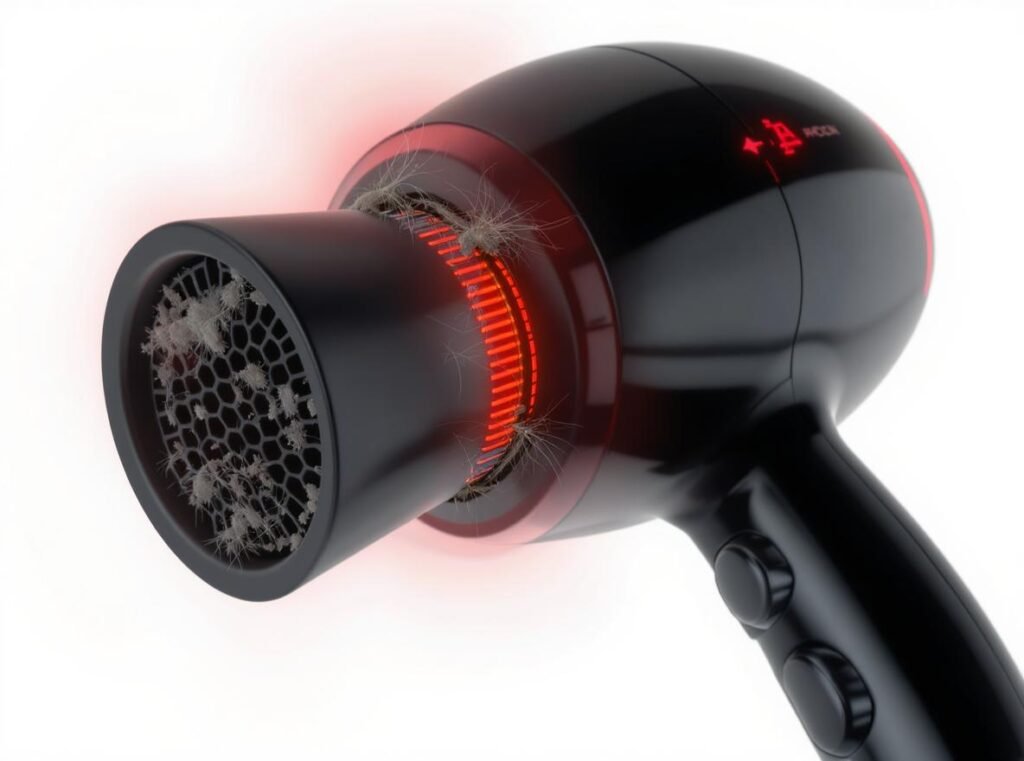
Airflow Restrictions Create Heat Buildup
When air intake vents become clogged with dust, lint, and hair, the heating element works harder to achieve desired temperatures, eventually triggering safety shutoffs. This natural accumulation accelerates with poor maintenance habits.
Continuous Operation Without Cooling
Many users operate hair dryers on high heat settings for extended periods without allowing internal components to cool down between uses. Professional stylists recommend 2-3 minute cooling breaks during extended styling sessions.
Thermal Safety System Function
Hair dryers have built-in thermal safety switches that automatically shut off the heating element when temperatures exceed safe limits. This protective feature prevents component damage and fire hazards but indicates underlying airflow problems.
| Overheating Cause | User Behavior | Prevention Method |
|---|---|---|
| Blocked air intake | Neglecting filter cleaning | Weekly filter maintenance |
| Continuous high-heat use | Extended styling sessions | Regular cooling breaks |
| Internal debris buildup | Poor storage practices | Proper post-use cleaning |
Quality Design Differences
Professional-grade hair dryers like our P1C model feature enhanced thermal protection systems and improved airflow design that better handle user mistakes while maintaining consistent performance.
What Causes Reduced Airflow in Hair Dryers?
Weak or diminished airflow manifests as longer drying times and reduced styling effectiveness, often resulting from clogged air intake vents or internal blockages. This common complaint frustrates users and indicates maintenance neglect.
Clogged air intake filters represent the primary cause of reduced airflow. Dust, hair, and lint accumulate in the rear grating, restricting the amount of air the motor can draw through the heating element, forcing extended operation times and increased component stress.
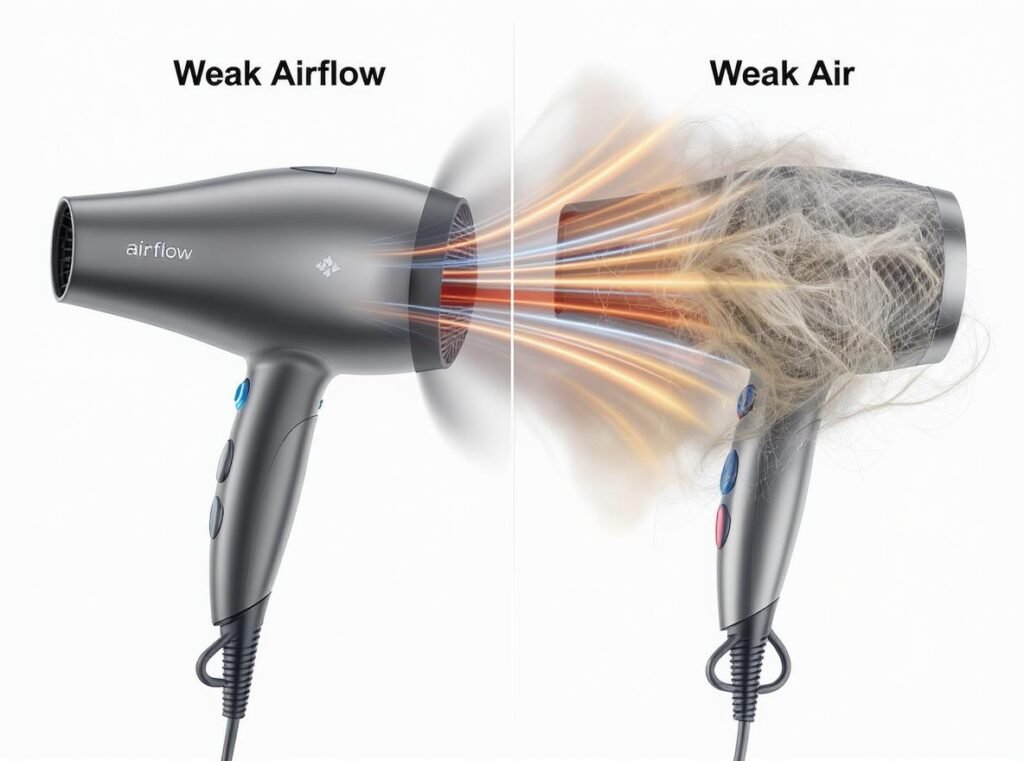
Filter Neglect Creates Cascading Problems
The rear filter should be cleaned weekly for frequent users, but most people ignore this simple maintenance task. When filters become severely blocked, several problems emerge:
- Motor strain from working against restricted airflow
- Increased operating temperatures throughout the system
- Reduced styling effectiveness requiring longer use periods
- Accelerated wear on internal components
Internal Component Blockages
Long hair frequently gets sucked into the unit and wraps around the fan assembly, progressively reducing airflow efficiency. This problem particularly affects households with long-haired family members.
Motor and Mechanical Issues
Motor bearing issues or damaged fan blades can significantly reduce airflow. When motors struggle due to lack of lubrication or mechanical wear, they cannot maintain proper air circulation.
Professional Maintenance Solutions
Quality hair dryers incorporate user-friendly maintenance features that make cleaning easier and more effective. Our P1C high-speed hair dryer includes removable filters and accessible cleaning points that help prevent airflow reduction.
For wholesale customers, emphasizing these maintenance benefits helps differentiate quality products from cheaper alternatives that lack proper filtration systems.
How Does Improper Hair Preparation Damage Hair Dryers?
Many users unknowingly stress their hair dryers by skipping essential preparation steps. These shortcuts create unnecessary component wear and reduce appliance longevity.
Using hair dryers on sopping wet hair creates several problems including increased drying time, forcing the heating element to work longer and harder, which accelerates component wear and increases overheating risk while extending overall operation periods.

The Wet Hair Challenge
Extremely wet hair increases drying time, forcing the heating element to work longer and harder, which accelerates component wear and increases overheating risk. This extended operation stresses multiple systems simultaneously.
Heat Protection and Equipment Longevity
While primarily a hair care issue, skipping heat protectant products can indirectly affect hair dryer longevity. When hair becomes damaged from excessive heat, users often compensate by using higher temperatures or longer drying times, stressing the appliance.
Sectioning Technique Impact
Failing to section hair properly during drying leads to longer operation times and increased heat exposure for both hair and the dryer. This extended use pattern contributes to premature component failure.
Optimal Preparation Sequence
Professional users follow systematic preparation that protects equipment:
- Towel drying – Remove excess moisture before electrical drying
- Heat protectant application – Enables lower temperature settings
- Proper sectioning – Reduces overall drying time by 30-40%
- Pre-drying assessment – Choose appropriate heat settings for hair condition
| Preparation Step | Equipment Benefit | Time Savings |
|---|---|---|
| Towel drying | Reduces motor runtime | 30-40% shorter operation |
| Heat protectant | Lower temperature requirements | Less thermal stress |
| Proper sectioning | More efficient airflow use | 25% faster drying |
Advanced Technology Advantages
Modern high-speed hair dryers like our P1C model incorporate ionic technology and intelligent heat distribution that performs more efficiently even when users skip preparation steps, providing better results in less time.
What Handling Mistakes Lead to Hair Dryer Damage?
Physical mishandling represents a significant category of preventable failures. These mechanical damages often void warranties and create safety hazards.
Common handling mistakes include holding the dryer too close to hair or surfaces causing overheating, dropping or roughly handling units that damage internal components, improper storage while components remain hot, and incorrect airflow direction that stresses internal mechanisms.
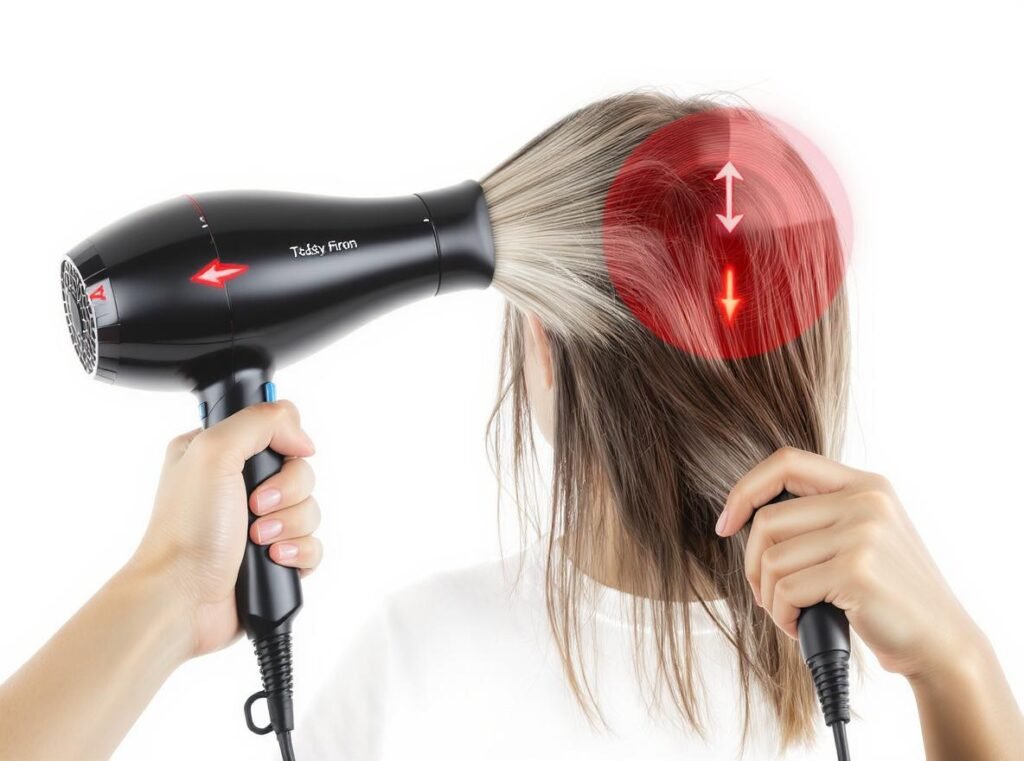
Distance and Heat Concentration Issues
Holding the dryer too close to hair or surfaces can cause overheating and component damage. The recommended distance is at least 6 inches from the scalp to prevent heat concentration. Closer distances create back-pressure that reduces cooling efficiency.
Directional Airflow Problems
Directing airflow against the hair’s natural growth pattern or moving the dryer erratically creates turbulence that can stress internal components. Proper technique involves consistent downward motion from roots to ends.
Physical Impact Damage
Dropping or roughly handling hair dryers can damage internal components, particularly the delicate heating elements and motor assemblies. Physical shock can disconnect wiring or crack heating coils.
Storage and Cord Management
Proper post-use handling prevents numerous problems:
- Allow complete cooling before storage (minimum 10 minutes)
- Avoid wrapping cords around hot housing
- Store in ventilated areas away from moisture
- Use loose coiling techniques to prevent cord damage
- Handle with both hands when moving between locations
Professional Design Features
Quality hair dryers incorporate protective design elements like reinforced housings, shock-resistant internal mounting, and heat-resistant materials that minimize damage from occasional mishandling.
Our P1C model includes these protective features along with ergonomic design elements that encourage proper handling techniques, making it ideal for busy commercial environments.
Why Do Hair Dryers Fail During Travel?
Travel presents unique challenges that frequently result in hair dryer failures. Understanding these risks helps users and retailers provide better guidance for mobile use.
Travel-related failures typically occur due to voltage incompatibility when using incorrect electrical systems, inadequate protection during transport, environmental factors like humidity and temperature extremes, and rushed packing that damages cords and attachments.
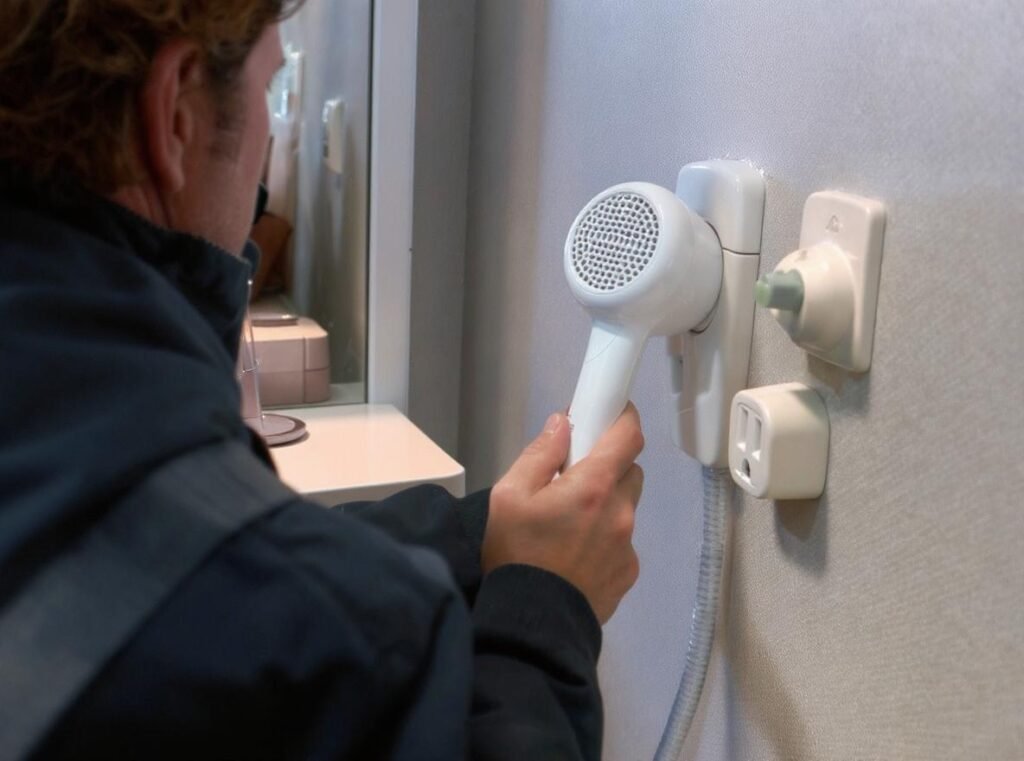
Voltage Compatibility Disasters
Using hair dryers with incorrect voltage is a leading cause of travel-related failures. Plugging a 110V North American hair dryer into a 220V outlet without proper voltage conversion can cause immediate and catastrophic damage, including melted cords and fire hazards.
Converter Selection Problems
Even when using voltage converters, improper converter selection can damage hair dryers. High-wattage appliances like hair dryers require specific converter types that many travelers don’t understand. Standard travel adapters only change plug shapes – they don’t convert voltage.
Environmental Stress Factors
Humidity and temperature changes during travel can affect electrical components. Additionally, different electrical systems and power quality in various countries can stress hair dryer components.
Transport Protection Strategies
Professional travelers and mobile stylists use specific protection methods:
- Hard-shell cases designed for electrical appliances
- Separate compartments for loose attachments
- Complete cooling before packing to prevent moisture condensation
- Gradual temperature acclimation in new environments
| Travel Risk | Damage Type | Prevention Strategy |
|---|---|---|
| Voltage incompatibility | Electrical component failure | Dual-voltage models |
| Physical transport damage | Housing cracks, cord damage | Protective hard cases |
| Environmental extremes | Condensation, thermal shock | Gradual acclimation |
Travel-Friendly Design Solutions
For retailers serving customers who travel frequently, recommending dual-voltage hair dryers or travel-specific models prevents returns and builds customer satisfaction. Professional-grade units often include international voltage compatibility.
How Do Cleaning Mistakes Damage Hair Dryers?
Improper cleaning attempts often cause more damage than complete neglect. Well-intentioned users frequently make critical mistakes during maintenance procedures.
The most damaging cleaning mistakes include using water or liquid cleaners on electrical components causing short circuits or corrosion, disassembling units beyond user-serviceable parts, using abrasive materials that damage surfaces, and failing to ensure complete drying before reassembly.

Water and Electrical Component Dangers
Using water or liquid cleaners on electrical components poses serious safety and damage risks. Many users incorrectly attempt to clean internal components with moisture, which can cause short circuits or corrosion.
Over-Disassembly Problems
Users sometimes fail to properly secure filters or housing components after cleaning, creating air leaks or mechanical stress. Incorrectly reassembling components after cleaning can create new problems.
Filter Maintenance Neglect
Neglecting regular filter cleaning allows buildup to reach critical levels that can permanently damage motors and heating elements. Weekly cleaning prevents this accumulation from reaching damaging levels.
Safe Cleaning Procedures
Professional maintenance requires specific techniques and materials:
- Complete power disconnection – Unplug and allow full cooling
- Dry cleaning methods only – Use soft brushes and vacuum attachments
- User-serviceable parts only – Follow manufacturer guidelines strictly
- Thorough drying verification – Ensure no moisture remains before reassembly
Abrasive Material Damage
Common cleaning mistakes include:
- Steel wool and abrasive pads that scratch surfaces
- Chemical cleaners that degrade rubber seals and gaskets
- Bleach-based products that discolor housing materials
- Acidic cleaners that corrode internal metal components
Manufacturer-Approved Techniques
Quality hair dryers include comprehensive maintenance instructions that balance thorough cleaning with component protection. Our P1C model features user-friendly access points and clear maintenance guidelines that prevent cleaning-related damage.
What Temperature Control Mistakes Cause Failures?
Incorrect temperature settings and heat management create both immediate and long-term problems for hair dryers and user safety.
Temperature control mistakes include consistently using maximum heat settings that unnecessarily stress heating elements, using inappropriate heat levels for specific hair types leading to extended operation times, and ignoring temperature warning signs like unusual smells or automatic shutoffs.
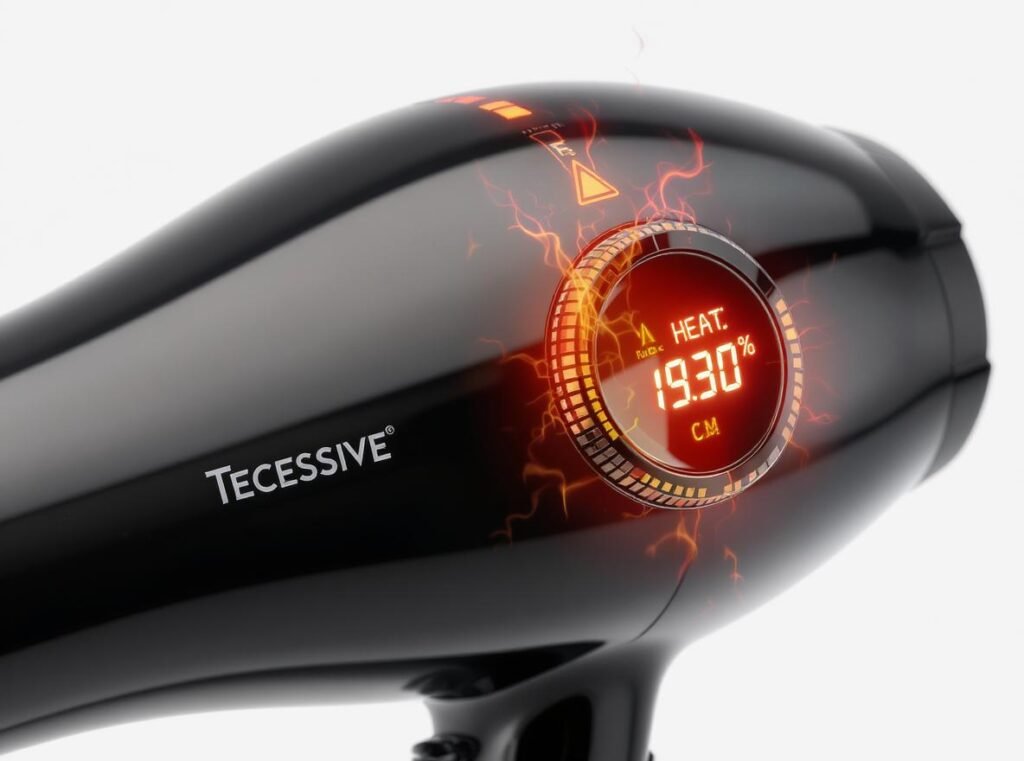
Maximum Heat Misconceptions
Consistently using maximum heat settings unnecessarily stresses heating elements and shortens component lifespan. Many users default to high heat believing it’s more effective, when moderate settings often provide better results with less wear.
Heat Setting Selection Errors
Using inappropriate heat levels for hair type can lead to extended drying times and increased component stress. Fine hair requires lower heat settings, while thick hair can handle higher temperatures more efficiently.
Warning Sign Ignorance
Continuing to use overheating hair dryers rather than addressing the underlying cause leads to component failure. Users often ignore warning signs like unusual smells, excessive heat, or automatic shutoffs.
Professional Heat Management
Experienced users understand that effective drying depends on technique rather than maximum temperature:
- Fine or damaged hair: Low to medium settings with ionic technology
- Normal hair: Medium heat with variable speed control
- Thick or coarse hair: Medium-high heat with powerful airflow
- Quick touch-ups: Cool shot settings for style setting
Advanced Temperature Technology
Modern hair dryers incorporate intelligent heat management that helps prevent user mistakes:
- Automatic temperature adjustment based on airflow sensors
- Digital displays showing exact temperature settings
- Cool shot buttons for style setting and heat breaks
- Sensor-based protection against component overheating
| Hair Type | Optimal Temperature | Common Mistake | Professional Solution |
|---|---|---|---|
| Fine/Damaged | Low-Medium (140-180°F) | Using maximum heat | Ionic technology, gentler settings |
| Normal | Medium (180-220°F) | Rushing with high heat | Balanced heat and airflow |
| Thick/Coarse | Medium-High (220-250°F) | Excessive heat duration | Efficient heating, powerful motor |
Technology Solutions for Retailers
Advanced hair dryers like our P1C model feature intelligent temperature control systems that automatically optimize heat based on usage patterns and environmental conditions. This technology helps prevent user mistakes while delivering professional results, making it an excellent choice for retailers serving diverse customer bases.
Summary
Hair dryer failures primarily result from preventable user mistakes including overheating from blocked airflow and continuous operation, reduced performance due to poor filter maintenance, power failures from damaged cords and blown thermal fuses, and component damage from improper handling and temperature control. Understanding these common issues enables better customer education, reduced warranty claims, and extended appliance lifespan through proper usage techniques and regular maintenance.
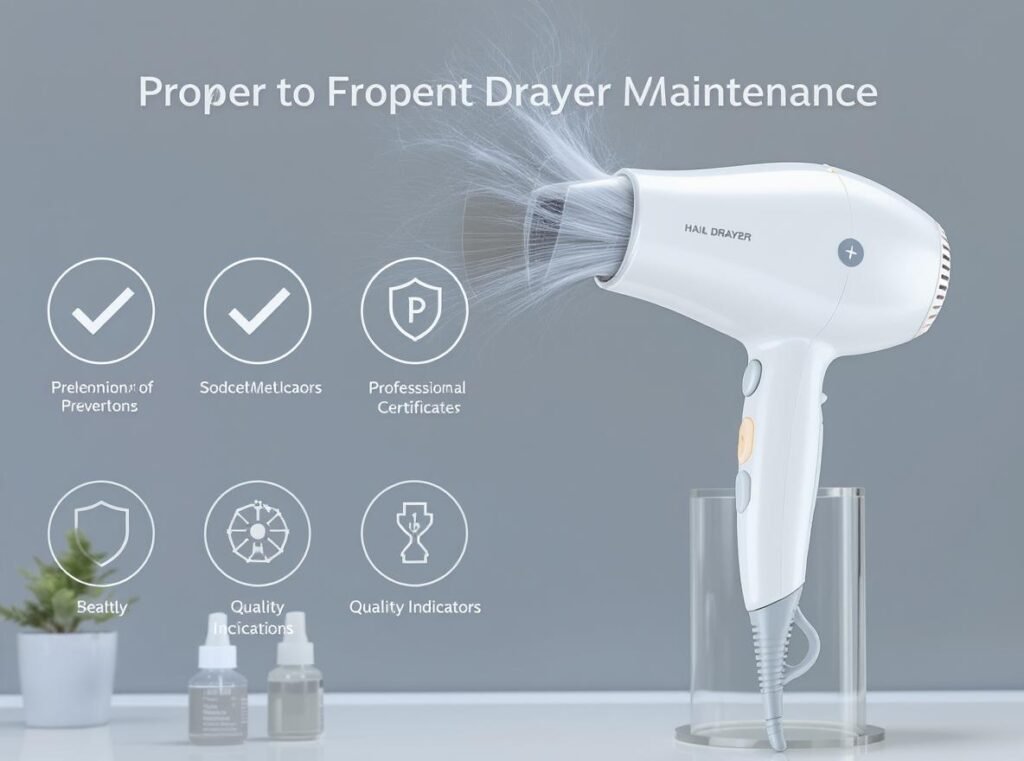
For wholesalers and retailers seeking reliable, user-friendly hair dryers that minimize common failure points, explore our P1C high-speed hair dryer at https://conason.com/product/conason-negative-ionic-fast-hair-dryer-with-screen-home-salon-use-p1c/, or browse our complete professional collection at https://conason.com/product/. Contact us today to discuss wholesale opportunities and discover how our advanced technology helps prevent user-related failures while delivering superior performance for your customers.



